Kick Out the Hams: Wild Savages' "Queen Bee" video
Do you remember the days before the smoking ban when you'd leave a concert smelling of stale cigarettes and cheap beer, and the stench would permeate your rusted-out car on the late-night ride home, lingering in your nose the next morning?
Wild Savages are the soundtrack for that drive.
The Ann Arbor trio plays bluesy proto-metal that would not have been out of place on WRIF in 1980. Think of Wild Savages as part of the 1970s Black Sabbath, Foghat, and Nazareth lineage that has produced contemporary bands like Red Fang, Saviours, and The Sword.
"Queen Bee" is the first single off the band's second album, Stagefright, which is being feted with a free record-release concert at The Blind Pig on Saturday, Dec. 16. Wild Savages goof around in the video by mugging for the camera like 1980s hair-metal bands, shotgunning beers, and playing bass on the toilet.
In other words, it's totally great.
All in the Family: Saxophonist Peter Formanek's senior recital
Peter Formanek is a 22-year-old saxophonist who is about to graduate from the University of Michigan's School of Music, Theatre & Dance with a Bachelor of Fine Arts degree.
But he's been studying music with a Ph.D.-level teacher his whole life.
His father, Michael Formanek, toured with giants like Tony Williams and Joe Henderson when he was still a teen in the early 1970s, and he went on to play with Freddie Hubbard, Gerry Mulligan, Stan Getz, Tim Berne, and Fred Hersch, among many others. He also records as a leader for ECM Records, one of the greatest jazz and classical labels ever.
As the younger Formanek mentioned at Love Songs, his senior recital on Monday, Nov. 27, at Kerrytown Concert House, there were always great musicians coming over to his family's home in Baltimore, Md. As he said while introducing his father, who joined him for the evening's final song, "I'm going to call up my dad, who is not only the person responsible for getting me into music but also giving me so many musical opportunities and access to all these really, really amazing musicians that I've been able to be around my entire life."
Formanek live-streamed his recital, which is archived on YouTube. (There will also be a high-quality edited version with audio from the board.) Below you'll find the list of musicians who joined him and the set list, which includes songs by Charles Mingus and Wayne Shorter, along with four Formanek originals -- three by Peter and the set closer by his dad.
Synthesize Your Life: A wrap-up of Mini MoogFest 2017
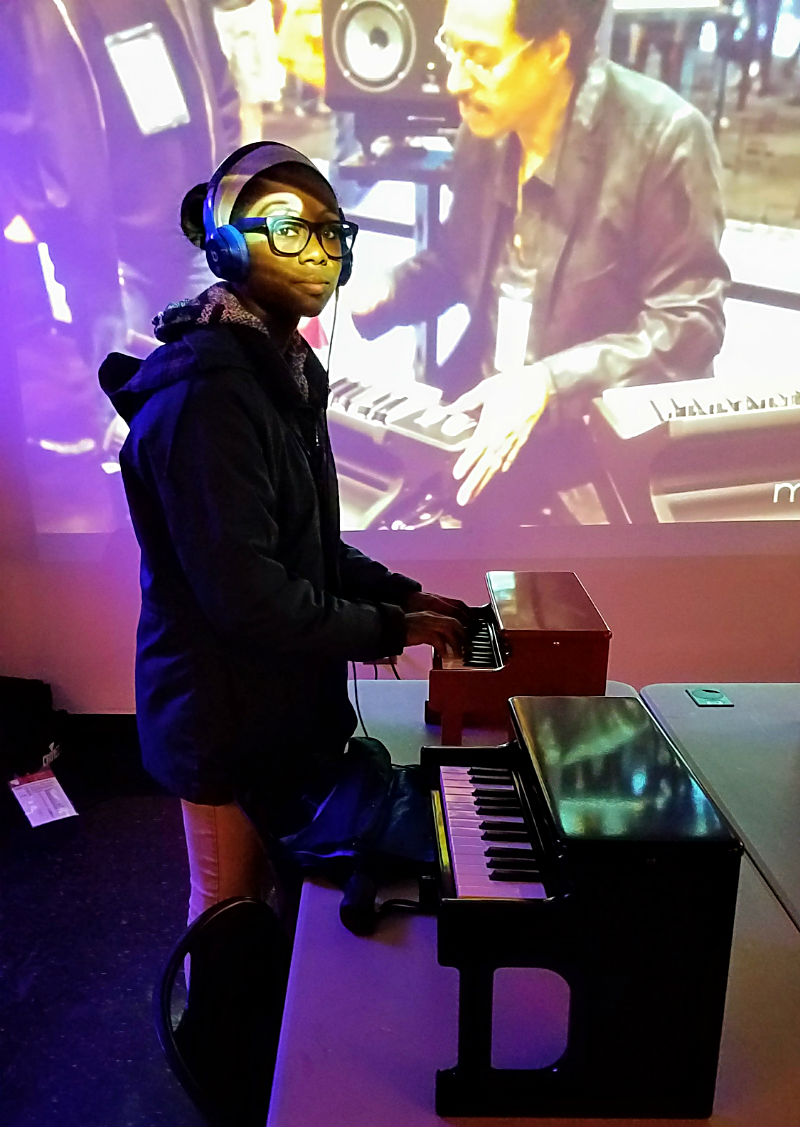
If we Ann Arbor District Library staffers were excited synthesizers, we'd be whooping with pitch-bent, major-key oscillations from the joy Mini MoogFest 2017 brought us. Our third annual iteration of this event greatly expanded upon our two previous offerings, and we had a fully packed house at the Downtown Library on Saturday, Nov. 18. Librarians on the scene estimated that over 350 people -- including around 75 kids -- made their way through Mini MoogFest, where they built synths using littleBits, played around with AADL's Music Tools, and enjoyed live performances from area electronica artists. Below is a roundup of photos, videos, and social media posts covering Mini MoogFest 2017.
Thanksgiving Tradition: Matt Watroba at The Ark

Thanksgiving is all about traditions. And over the last couple of decades, one tradition that has taken root in Ann Arbor is Matt Watroba’s Day-After-Thanksgiving Concert at The Ark.
The well-known Michigan performer, songwriter, and radio host isn’t exactly sure how long he’s been doing the concert on the day after the holiday, but he estimates it’s been about 25 years. It’s become his most popular annual gig, and he knows some families incorporate it into their regular holiday plans.
“It has taken on a real community feel,” he says. “People are actually making it a tradition.”
While the annual show often features some guest performers, this year’s edition will likely be something closer to a solo show -- although he notes, “There’s always the possibility of surprise guests popping in.”
Watroba’s wife, Kim, will sing with him for part of the concert. “It’s awfully fun to sing love songs on stage with someone you actually love,” he says.
Since the audience typically includes some longtime fans, Watroba will try to include some material from all his past albums. And he’ll definitely include a “community sings” component, something that has become a major focus for him in recent years.
The community sings movement encourages regular gatherings of people to sing as a group, regardless of musical ability. Watroba’s involvement began when he conducted a radio interview with folk music icon Pete Seeger, the dean of the movement, aged 89 at the time. At the close of a long, accomplished career in music and social activism, Seeger told Watroba his most important work was getting people to sing for themselves.
“That just astounded me,” Watroba recalls. So, a couple years later, “Living in a country that seems to be more polarized than ever, I got the notion that it was time to take up Pete’s invitation.” He now leads some regular community sings across the region, and he also spends time spreading the word and teaching others how to lead them.
Community sings can include classic folk songs as well as newer songs that can be easily taught. The type of song doesn’t matter; the act of singing together is what’s important. “Everybody leaves feeling better than when they got there,” Watroba says.
Although he’s well known throughout the region as a performer -- both on his own and in partnership with Robert Jones, with whom he’s also creating a new nonprofit called Common Chords -- many fans first came to know Watroba via radio. For more than 20 years, he hosted the Folks Like Us show, primarily on WDET, playing a wide range of acoustic-based music.
Just last month, he returned to the Michigan airwaves: Folk With Matt Watroba now airs 6-8 p.m. Sundays on WKAR in East Lansing, and it can be streamed online at wkar.org.
“It’s really been heartwarming,” Watroba says of the reception to the show. “WKAR has just bent over backward to make it happen.”
He’s committed to always featuring some Michigan artists on the show, and he also includes a calendar of folk music events around the region -- both of which were important features of Folks Like Us. He notes with a chuckle, “That old show had an effect on a lot of people.”
Bob Needham is a freelance writer; the former arts & entertainment editor of The Ann Arbor News and AnnArbor.com.
Matt Watroba plays The Ark, 316 S. Main St., at 8 pm on Friday, Nov. 24. Tickets are $20/$27; a dinner-show combination is also available in conjunction with Conor O’Neill’s for $30/$37. Visit theark.org for tickets and more info.
Orchestrated Mahavishnu: John McLaughlin & Co. at Michigan Theater
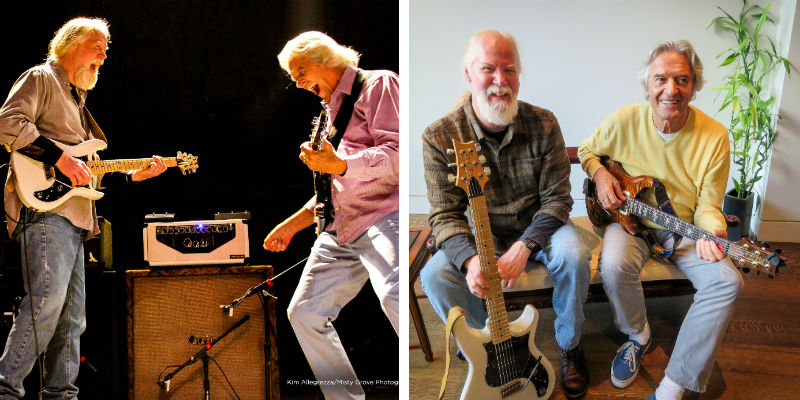
John McLaughlin’s farewell tour bus pulled into Ann Arbor on Wednesday night and delivered the goods with a program titled Mahavishnu Revisited. McLaughlin was backed by The 4th Dimension for most of the show, with openers Jimmy Herring and The Invisible Whip joining them on stage at the Michigan Theater for a symphony of sound dedicated to exploring the music of Mahavishnu Orchestra.
The show opened with a set by Jimmy Herring (Aquarium Rescue Unit, Widespread Panic) and his new band, The Invisible Whip. Herring ambled onstage with little pomp, clad in drab flannel and looking like a rock 'n' roll Johnny Appleseed. His band followed and they launched right into a gritty blues jam. Throughout the entire set, the band spoke not a single word from the stage, letting the music do all the talking.
The Invisible Whip is a quintet: guitar, bass, drums, Fender Rhodes, and organ/clavinet. Jason Crosby was a standout on Rhodes, and peppered the set with occasional violin as well, never losing the pied-piper twinkle in his eye. The band dusted off some older tunes from Herring’s solo albums, Lifeboat and Subject to Change Without Notice, interspersing them with new compositions he has been working on for their debut record as The Invisible Whip.
It was a playful set with a lot of textural variety. Matt Slocum’s swampy B3 grooves and Crosby’s crunchy Rhodes set the table for soaring solo work by Herring, while bassist Kevin Scott and drummer Jeff Sipe propelled the band forward. Mixing genres with freewheeling ease, they treated the Michigan Theater like everything from a jazz club to an arena. The mood was one of joy and mischief, a vibe I hope the upcoming record captures. After a no-holds-barred hard-rock closer, bassist Scott tried to introduce the band through a dead mic. When no tech support was forthcoming, he glanced over at Herring, who simply shrugged before giving the audience a grin and a wave, then shuffling offstage.
McLaughlin and The 4th Dimension arrived on the scene after intermission to a thunderous welcome. They made it clear they were saving the Mahavishnu material for the third set -- a joint performance by both bands -- by playing a range of selections from McLaughlin’s solo career as well as their collaborative work as The 4th Dimension. Among the more recent compositions was a tune intended for Paco de Lucía called "El Hombre Que Sabía (The Man Who Knew)," which McLaughlin performed in the flamenco guitarist's memory. The current iteration of the 4th Dimension includes longtime McLaughlin collaborator Gary Husband, bassist Étienne M'Bappé, and drummer Ranjit Barot.
Husband -- who is equally at home behind a drum set or keyboard -- brought a drummer’s sensibility to the keys, unleashing their full percussive potential. M'Bappé, meanwhile, demonstrated his willingness to open the wormhole with a galactic bass solo in the third tune of the set. For his part, Barot charted a steady course through rhythmically shifting waters with a combination of drum kit and vocal percussion.
It is always a thrill to see such virtuosic musicians pay so much attention to one another and stay so completely engaged even when sitting a section out. Throughout both The 4th Dimension set and the Mahavishnu supergroup finale, any time a given performer was less involved in whatever was happening musically on stage, they counted out mixed-meter rhythms with exaggerated claps and hand motions. Besides simply being entertaining to watch, this helped them keep hold of the complicated rhythms while also making the time signature clearer to the audience.
Needless to say, McLaughlin himself was in his element. He handled himself with composure and grace but certainly wasn’t afraid to let on that he was having a blast. Never letting his signature rapid-fire technique overshadow his dynamic musicality, he provided loose direction to the ensemble, intermittently conducting with capricious hand gestures. The performers sharing the stage with him were hyperattentive to his signals. This was especially evident when Herring and the Invisible Whip returned to the stage to conjure the spirit of the Mahavishnu Orchestra.
Herring, Crosby, McLaughlin, and Husband played blisteringly fast and involved lines in jaw-dropping unison, as though drawing them out from some deep, commonly held source. The crowd was fully engaged at this point, leaping to their feet after nearly every piece. McLaughlin and company had come prepared to please. The exuberant closing set sampled evenly across the Mahavishnu Orchestra’s best-loved and most iconic material, from The Inner Mounting Flame and Birds of Fire to Visions of the Emerald Beyond. Some standouts were "Meeting of the Spirits," "The Dance of Maya," and an expansive rendition of "Eternity’s Breath."
Goodbyes can be tough, but McLaughlin summoned up a fond and generous farewell for the fusion lovers and Mahavishnu followers of southeast Michigan.
Nicco Pandolfi is a freelance writer and a graduate student in Information Science at the University of Michigan. He mainly writes about what he mainly thinks about: music and food.
Mini MoogFest 2017: Sound Science
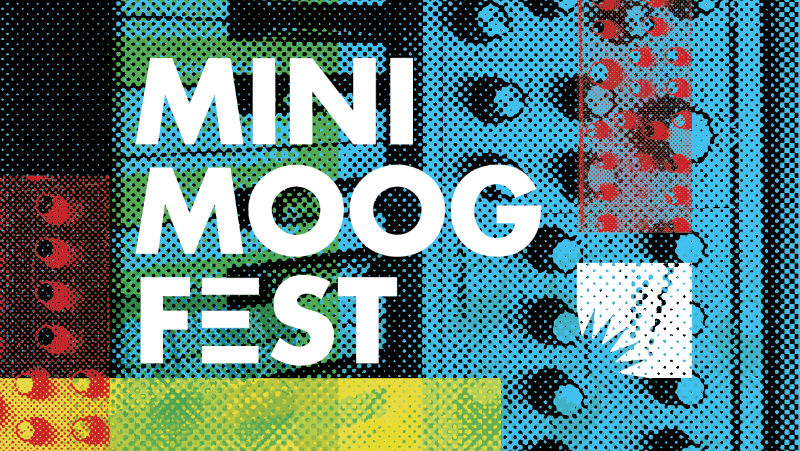
Robert Moog had no musical talent. But his talents changed music.
At the age of 15, Moog built his first Theremin, the ghostly, no-touch instrument created by Leon Theremin in the 1920s that used the amplitude and voltage of radio waves to manipulate two oscillators controlling pitch and volume. Moog continued to use his engineering skills to fine-tune these instruments, and by age 19 he was selling Theremin kits to help fund his college studies.
In 1964, the year before he earned his Ph.D. in engineering physics from Cornell University, Moog created his first synthesizer. By 1968, everyone from Stevie Wonder to The Beatles had used Moog synths on recordings, and in 1969 Wendy Carlos -- a frequent advisor to Moog -- had a chart-topping hit with Switched-On Bach, an LP featuring all-electronic versions of classical masterpieces.
By the early 1970s, the Minimoog Model D -- the world's first portable synthesizer -- became a staple in popular music and set the groundwork for all electronic music that followed, from the ambient bliss of Brian Eno and film soundtracks of Vangelis to the robotic beats of Kraftwerk and the entire genre of Detroit techno.
It's with Moog in mind that we created the Ann Arbor District Library's Mini MoogFest (Sat. Nov. 18, 12-4 pm, downtown branch). But it's a really a celebration of all the things that whoosh, squiggle, chirp, beep, bleep, and gurgle, from Don Buchla's equally important modular-synth inventions in the 1960s right up to today's home-brew makers who bust out the soldering irons and circuit boards to create their own custom sound modules.
At Mini MoogFest you'll be able to test out a variety of effects pedals, music-making software, and electronic instruments, including Moog modular units and Thereminis, the Arp Odyssey, and many more. Many of the pieces are available to borrow from AADL's Music Tools collection, too. Think of it as a music store where you won't get yelled at for playing around with the gear.
We'll also have three performances in the multipurpose room by artists who will talk about how they create their sounds, from the basics of synthesis to the specific gear in their stage setups. The lineup is:
➥ 1 pm: Sean Curtis Patrick (➲ PULP INTERVIEW), Kendal Babl, and Chuck Sipperley
➥ 2 pm: Mike Dykehouse (➲ PULP INTERVIEW)
➥ 3 pm: North Coast Modular Collective (➲ PULP INTERVIEW)
Producer, audio engineer, and artist Alex Taam -- who records under the name Mogi Grumbles -- will also be on hand to allow folks to play with his various Moogs and modulars as well as assist people in exploring the gear that will be spread around in the Secret Lab. (➲ PULP INTERVIEW)
This is a family-friendly event, too, so bring the kids and let them make outer-space sounds, video-game soundtracks, and noise jams. There will also be giveaways featuring T-shirts, winter hats, patch cables, screwdrivers, buttons, and other swag from gear companies and dealers such as Make Noise, Line 6, Boss, Roland, Korg, Electro-Fautus, Control, Perfect Circuit Audio, Reverb, and Sweetwater.
If you've ever been interested in how to make electronic music, Mini MoogFest is the perfect opportunity to dabble, experiment, and invent. As with Robert Moog, no musical talent is necessary.
Christopher Porter is a library technician and the editor of Pulp.
Mini MoogFest is Saturday, Nov. 18, 12-4 pm in the multipurpose room and Secret Lab of the Ann Arbor District Library's downtown branch, 343 S. 5th Ave. Facebook event page. Check out interviews with Mini MoogFest performers Sean Curtis Patrick, Alex Taam, North Coast Modular Collective, and Mike Dykehouse.
Mini MoogFest 2017: North Coast Modular Collective
The North Coast Modular Collective is like a modular synthesizer: made up of many parts to create a sonic whole. The group is a loose collection of Washtenaw County-area musicians and creators who teamed up earlier this year and pooled their talents to share gear, create new instruments, and trade ideas.
The trio of Joe Bauer, Dan Blades, and Bill Van Loo will represent the collective at Mini MoogFest, and we asked them their about plans for the event, the gear they'll be using, and their favorite synth-leaning recordings. (Also, here's a primer on Eurorack synths, which the collective mentions several times.)
Q: What's your plan for MoogFest?
NCMC: Three of us from North Coast Modular Collective will be there. In short, we’re a group of artists, academics, and makers who aim to spread curiosity, enable exploration, and foster community. Then each of us will spend 15 minutes doing some combination of talking and performing.
Bauer: I’ll be playing about 10 minutes of semi-improvised electro-glitch music (similar to this or this) and then I’ll spend about five minutes explaining and demonstrating a few of the basic concepts and techniques I used. If you’re curious about how I get ready for a show you can follow me on Instagram or YouTube to see some behind the scenes clips as I get prepared.
Blades: I’ll spend a couple of minutes talking about my latest modular build. I’ll then be using it as an audio source and running the audio through some Eurorack effects. The set will be completely improvisational.
Van Loo: I will be performing a rolling 10-minute exploration of deep dub techno chords and sounds, and then spend about 5 minutes explaining what I used and how I used it. Check out the chromedecay Instagram account for behind-the-scenes takes on how this has been developing, via grainy 60-second square videos.
Q: What's your gear setup?
Van Loo: Since we’re focusing on the modular aspect for this performance, I’ll be using a single row Eurorack system, with a mix of prototype North Coast Modular Collective modules, modules from other manufacturers, and DIY pieces. Most of the main sounds will come from this single set of modules, but I’ll add some drum sounds -- some created with a virtual modular synthesizer called VCV Rack -- sequenced on the Novation Circuit. Delay and reverb will allow me to create the atmosphere I want for my set.
Bauer: I’ll be using a 9U, 104hp self-built Eurorack case with 32 modules from 18 different manufacturers. Fourteen modules were self-built. Of those, four are North Coast Modular Collective designs. English translation: I have a wood box with a bunch of electronics in it -- some of them I built, a few I helped design -- and wires and knobs hanging out of it.
This is what it looks like without any of the wires plugged in:
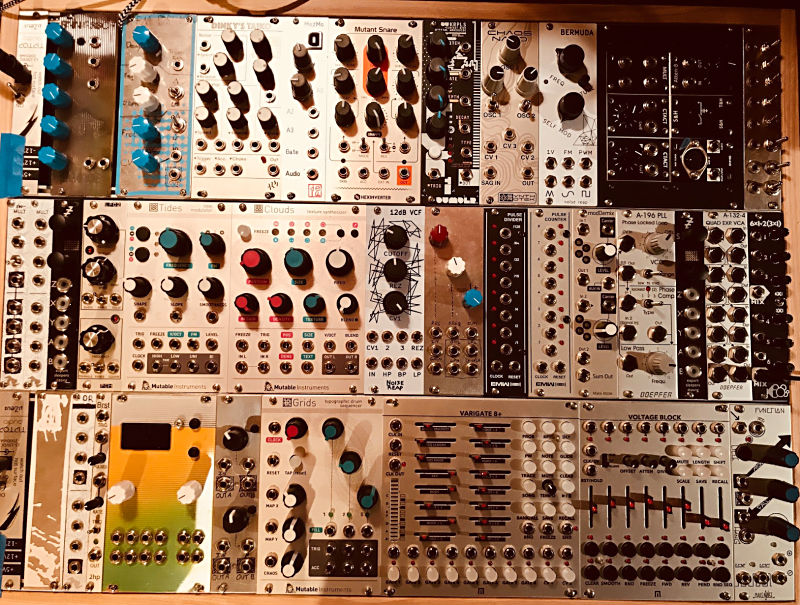
Blades: My main setup is mostly Eurorack. It’s my vessel to explore sound design. It’s constantly changing and evolving. Lately, I’ve favored modules that work well in live situations, modules that can sample audio, and modules that produce random voltages. I want my setup to surprise me and anyone who wants to listen.
This is my latest completed project that I will be using for my performance:
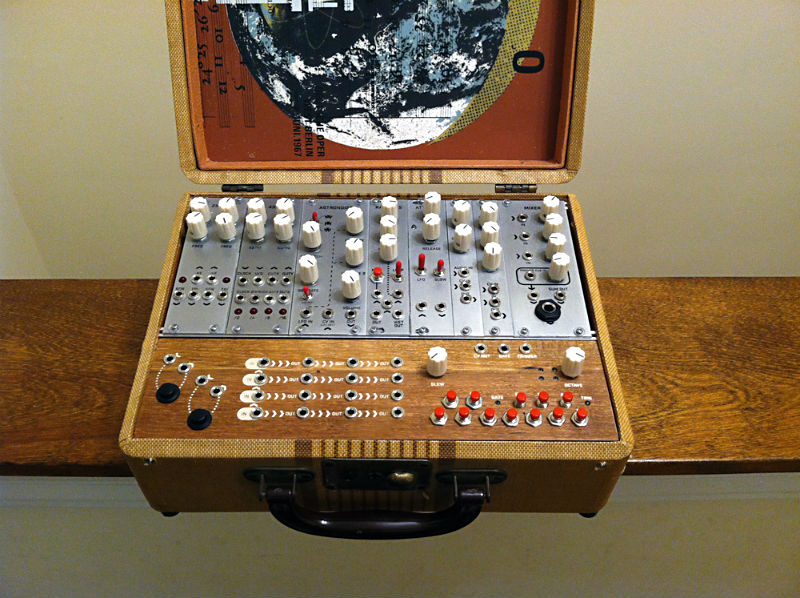
The idea behind this project was to build a flexible, self-contained, portable synth that had the capability of being used as a “traditional” monosynth but could also be an experimental sound platform. The synth is made up of 10 Eurorack modules, built from available manufactured PCB boards, installed into a repurposed vintage suitcase.
NCMC: North Coast Modular Collective tries to spread curiosity, enable exploration, and foster community. To that end, we held a three-day camp over summer where we designed and built our own set of modular synthesizer cases. During that time we also built and programmed a few modules from a popular module designer who goes by the name of mxmxmx.
Our design process often includes cardboard mockups of early concepts to make sure the design concept basics work in physical form. From there we commonly break up circuits into isolated building blocks and use several iterations of design/build/test for each design block before integrating them together into a single module.
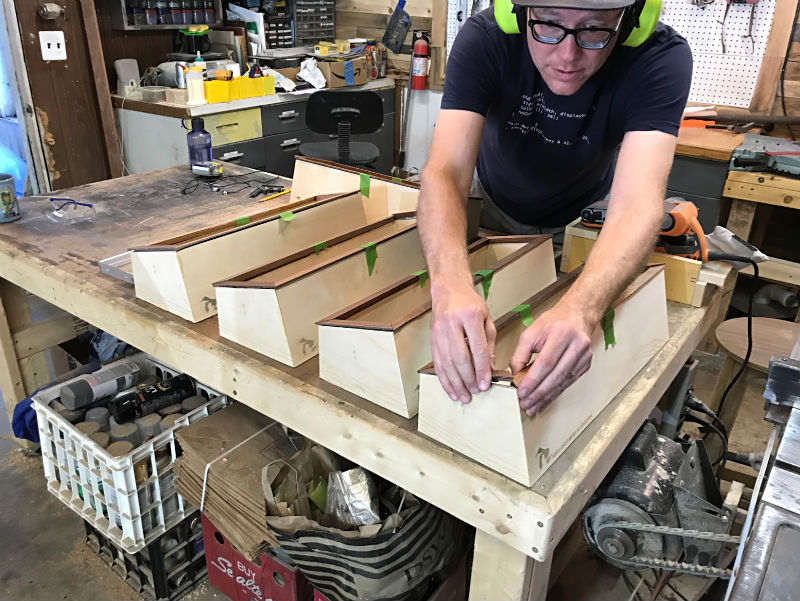
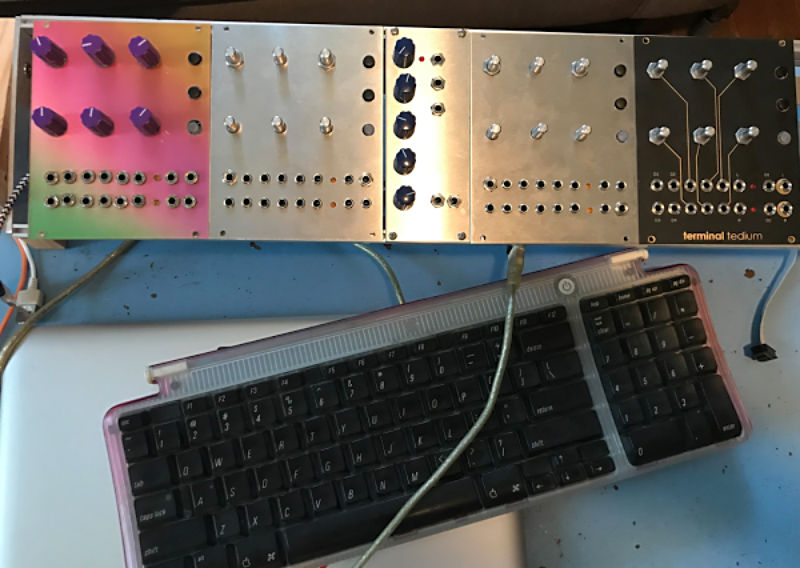
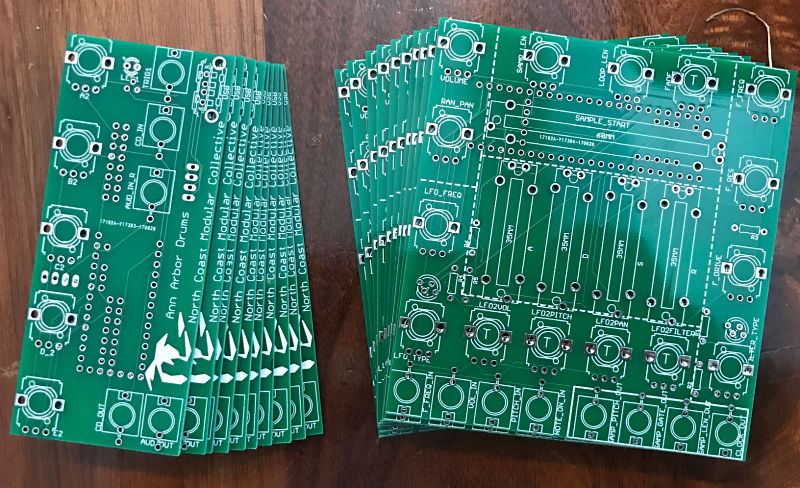
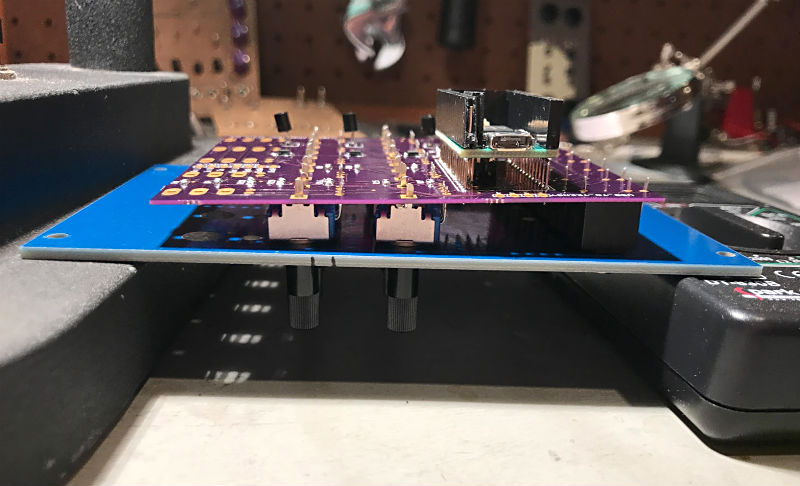
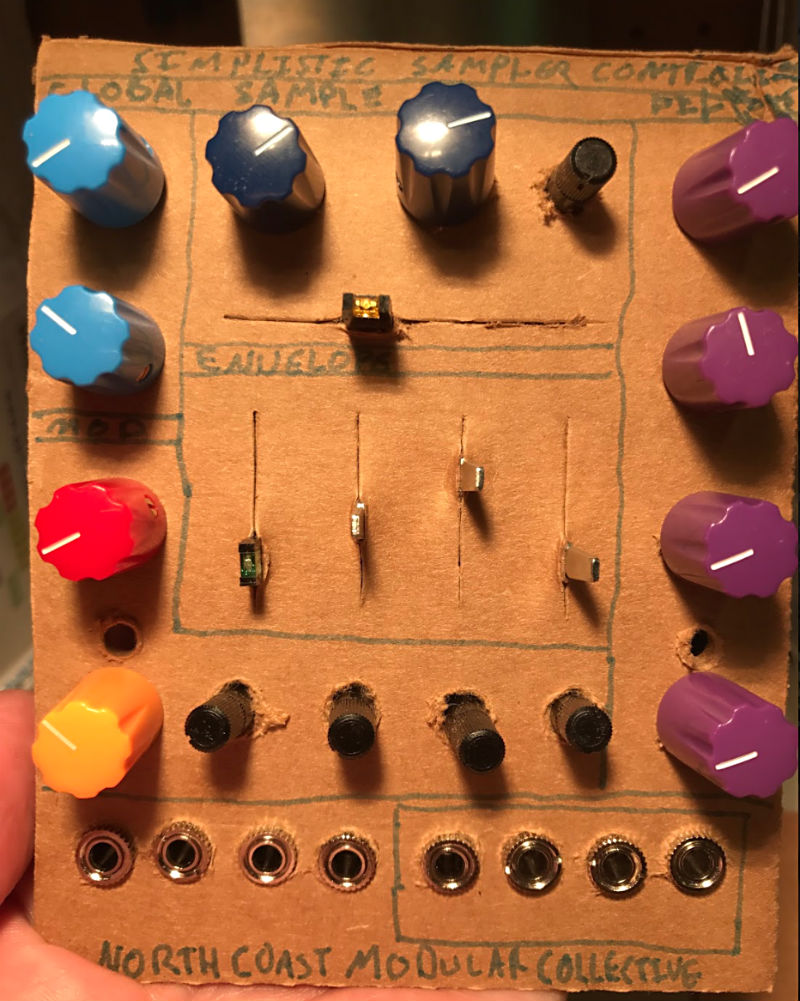
Q: Name some synth-related records that you'd recommend to newbies.
Bauer: It’s not a record, but I highly recommend watching:
➥ I Dream of Wires (AADL link). It’s a great introduction to the history of synthesis and does a nice job of putting some context around Bob Moog and Don Buchla and how their work still impacts music today.
Blades: One of my favorite artists:
➥ Venetian Snares, Traditional Synthesizer Music: A full album of live modular music created by Aaron Funk. Here is a video of Aaron with his modular performing a track from the album:
Van Loo: Here are a few records that have inspired me and are well worth digging into:
➥ Kraftwerk, Computer World: A perfect combination of pop sensibility with the most pure electronic sounds. Utterly classic.
➥ Monolake, Hong Kong: A deep slice of Berlin-based dub techno, using found sounds, synthesis, and echoes to set an amazing atmosphere. The duo went on to found Ableton, the company that makes Ableton Live, perhaps the most important piece of music software in the past 15 years.
➥ Telefon Tel Aviv, Fahrenheit Fair Enough: Impeccable sound design and programming. Still an inspiration 15 years after its release.
➥ Psyche/BFC, Elements 1989-90: Classic Detroit techno from one of my favorite Carl Craig aliases. “How the West Was Won” from this record may be one of the loveliest and most gently melancholic pieces of electronic music that exists.
➥ Steve Reich, Music for 18 Musicians: Not truly electronic at all, but so deeply influential to how I approach electronic music as to be essential, and Reich’s early tape and electronics work predates much of the current interest in things like Euclidean rhythm, field recording, and phasing.
Christopher Porter is a library technician and the editor of Pulp.
Mini MoogFest is Saturday, Nov. 18, 12-4 pm in the multipurpose room and Secret Lab of the Ann Arbor District Library's downtown branch, 343 S. 5th Ave. Facebook event page. Read our introduction to MoogFest here. Check out interviews with Mini MoogFest performers Mike Dykehouse, Sean Curtis Patrick, and Alex Taam.
Mini MoogFest 2017: Sean Curtis Patrick
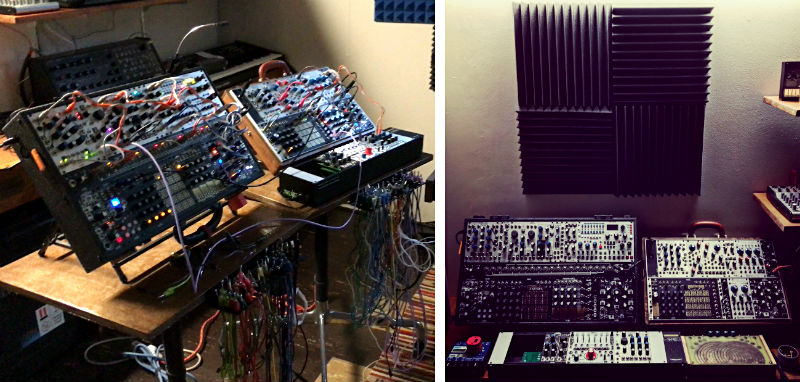
Sean Curtis Patrick is a visual artist who also makes music, so it's not unreasonable to expect when he and fellow visual artisan Kendall Babl team up with Chuck Sipperley -- expert DJ and super-synther in Hydropark and Utica -- the trio will paint electronic aural sculptures in your mind, MAAAAAAAAAN.
We asked Patrick what the group's plans are for the festival, the gear he'll be using, and received recommendations for his favorite synth-leaning recordings.
Q: What's your plan for MoogFest?
A: I’ll be playing with Kendall Babl and Chuck Sipperley, and I will be using my modular synth system.
I have two separate rolling tables, which will both be independent of one another. One will be more “playable” with a series of small pressure-sensitive pads to trigger a group of notes. The other system will be more textural.
A modular system is a really interesting way to create and modify sounds. To sum it up, it’s a series of building blocks, decided by the performer, that one can connect in different ways to create both simple and complex sounds using patch cables. It’s the closest thing to being able to make “sound science.” It looks scientific, that’s for sure. I would say that’s what the uninitiated say more than anything else: “Looks like a science experiment!” They aren’t wrong, it kind of is!
For this show, I’ll mainly be listening to what the other two will be doing to supplement their melodies with textures and the occasional measure of melody or some counterpoint. We are going to be fairly improvisational, too. I’m really excited to see what the other performers get up to and am thrilled to be able to attend and perform! Thanks for having us!
Q: What's your gear setup?
A: I am generally more known as a visual artist before a musician, and making visual art has allowed me to work with many wonderful musicians. I have made a lot of music videos and have done a fair share of art and design for albums. One particular person I have worked with for quite a long time now is my friend Alessandro Cortini. He is an incredible solo musician, lovely human being, fellow cat owner, and has been in the band Nine Inch Nails for the last decade or so. He asked me to work on a record of his that was going to come out on Make Noise Records, a component of Make Noise, a modular synth company.
I became pals with the Make Noise folks over the course of making that record and came to a great agreement with them that’s stands to this day: I make them art and I get paid in gear. I owe this new instrumental exploration totally to Kelly Kebel and Tony Rolando, and also to Make Noise pals Peter Speer and Walker Farrell. I can’t thank them enough -- 19 out of my 30 modules are Make Noise. I think they are the best modular synth company out there and I contend that Tony Rolando is my generation's Don Buchla, one of the pioneers of synthesis. I’d love to see how his brain works.
Anyway, my one larger black case is made my Make Noise and is called the Shared System, which is a full plug-and-play thing you can buy from them. The other case is a beautifully made black poplar case I commissioned from some guitar makers in Italy. It looks like the back of an acoustic guitar, with varnished bookmatched wood. They did a wonderful job and are total sweethearts. That case is filled with a number of manufacturers modules that complement the other system quite well.
I designed the tables that the synths sit on. The caster sets are Ray and Charles Eames-designed from the 1960s. I cut two plywood boards to size and installed cable management and power into the bottom. I wish I could go back in time to that kid (me) in a college dorm, programming computers to make rubbish-sounding drum machines and show them the setup he’d have one day. I feel very, very lucky to work with such lovely and talented people and the fact that I am able to use any of this still blows me away.
Q: Name some synth-related records that you'd recommend to newbies.
A: Some albums and some artists:
➥ Isso Tomita, Snowflakes Are Dancing: The record that hooked me on synths. I had to record this record on to a cassette at the university library. I still have it.
➥ Morton Subotnik, Silver Apples of the Moon: The record that allowed me to look at music through a different lens; music doesn’t have to be 3-minute jangly pop music. It can be serious, artful, and a bit challenging.
➥ Boards of Canada, anything: The best driving music ever-ever.
➥ Kaitlyn Aurelia Smith, anything: Wonderfully melodic chanty/Buchla Music Easel arpeggios. If people ever discounted electronic music having soul, play them her music.
➥ Burial, anything: A musician more than any other that has shown me you can make an amazing record with just a laptop and some dodgy Christina Agulera samples slowed down.
➥ Alessandro Cortini, Avanti: My pal Alessandro did it again. This record made me cry. I also did the art and tour visuals for it, all based on 8mm family films from his grandfather. My favorite album of the year, even if I hadn’t had anything to do with it.
➥ Supersilent, Supersilent 7: Improv jazz and synths? Tell me more. Play loud or, better yet, watch the accompanying concert DVD in a dark room. Max volume.
➥ Suzanne Ciani, Buchla Concerts 1975: One incredible mind, one amazing machine, two selected concerts recorded onto tape in New York lofts in 1975. If you were wondering what just one of these boxes could do, listen here.
➥ Various artists, Electronic Music Winners: Best known as the record that inspired Jonny Greenwood of Radiohead to write the track “Idioteque” but a lot of other amazing moments on this record.
Christopher Porter is a library technician and the editor of Pulp.
Mini MoogFest is Saturday, Nov. 18, 12-4 pm in the multipurpose room and Secret Lab of the Ann Arbor District Library's downtown branch, 343 S. 5th Ave. Facebook event page. Read our introduction to MoogFest here. Check out interviews with Mini MoogFest performers Mike Dykehouse, Alex Taam, and North Coast Modular Collective.
Mini MoogFest 2017: Alex Taam
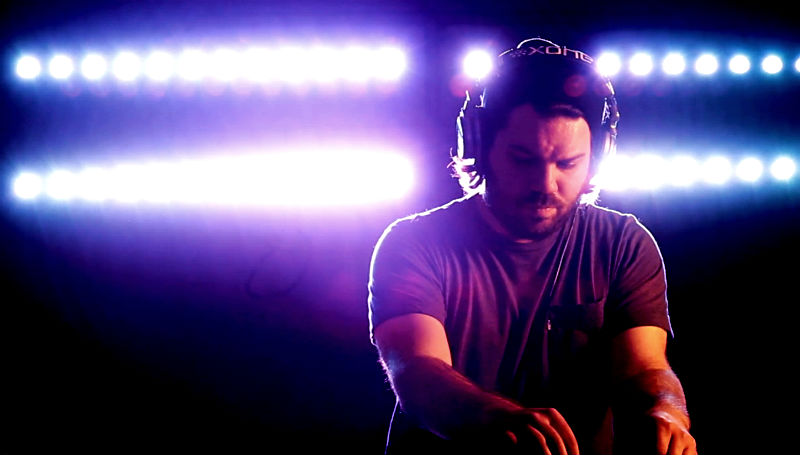
Alex Taam is a recording-studio engineer, composer, and all around gearhead. His mastery of synths is one of the reasons why we asked him to write and record two songs using instruments from AADL's Music Tools collection, which he did in February. Taam's knowledge about all things electronica is also the reason why we asked him to help us host Mini MoogFest. He'll be on hand to demonstrate some instruments, including a modular synth, and guide you through many of the other instruments we'll have on display for hands-on play.
We talked to Taam about his Mini MoogFest plans, the gear he's bringing, and asked him to name his favorite synth-related recordings.
Mini MoogFest 2017: Mike Dykehouse
In addition to being a remarkable painter, Mike Dykehouse is an immensely creative musician. But after his Dynamic Obsolescence (2001) album on the influential British electronica Planet Mu and another on Ghostly International with the shoegaze-y Midrange (2004), Dykehouse mostly went underground.
Or rather, to Instagram.
Dykehouse's daily video clips of new synth jams -- ranging from straight-up techno and boogie-bass electro to hip-hop boom-bap and exploratory noise -- are often highlights of his followers' days. (Am I projecting?)
In a rare live appearance, Dykehouse will demonstrate the latest version of his ever-changing modular synth setup at Mini MoogFest, giving listeners a front-row seat to his daily sonic rituals.
We talked to Dykehouse about his Mini MoogFest plans, the gear he's bringing, and asked him to name his favorite synth-related recordings. But to evoke the immortal Joe Perry Project, Dykehouse mostly lets the music do the talking.


































